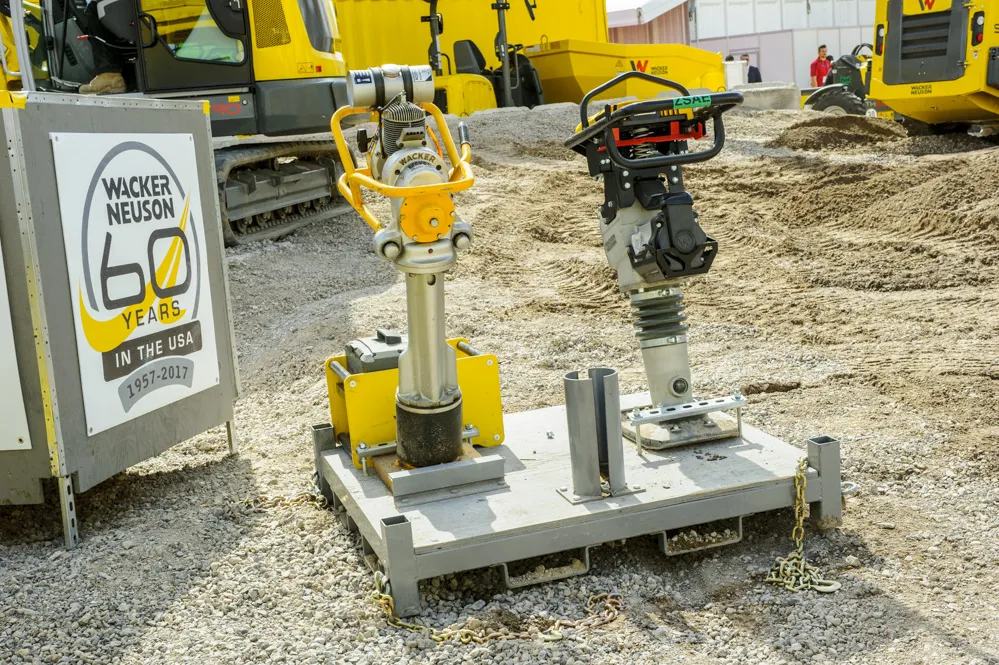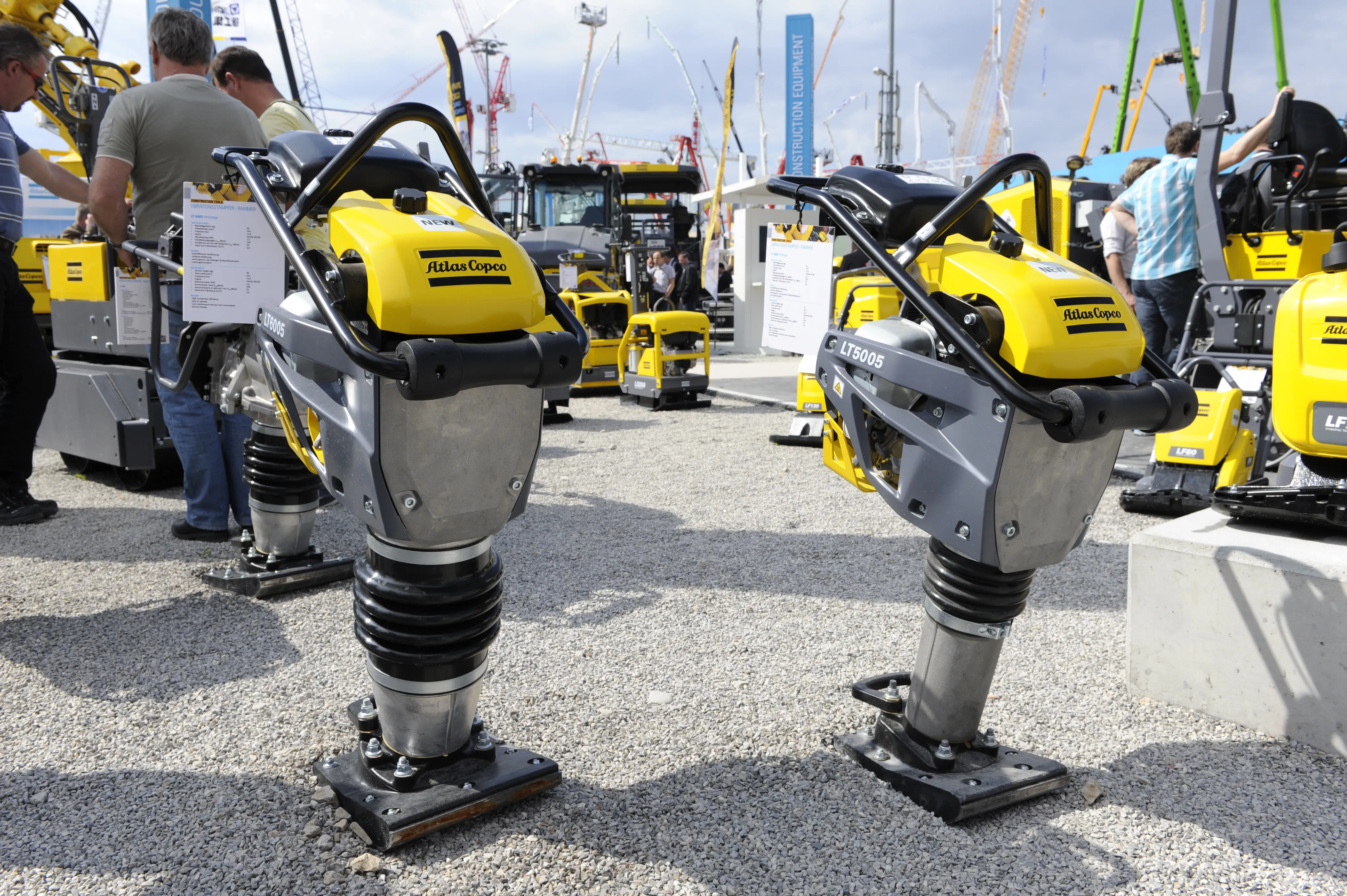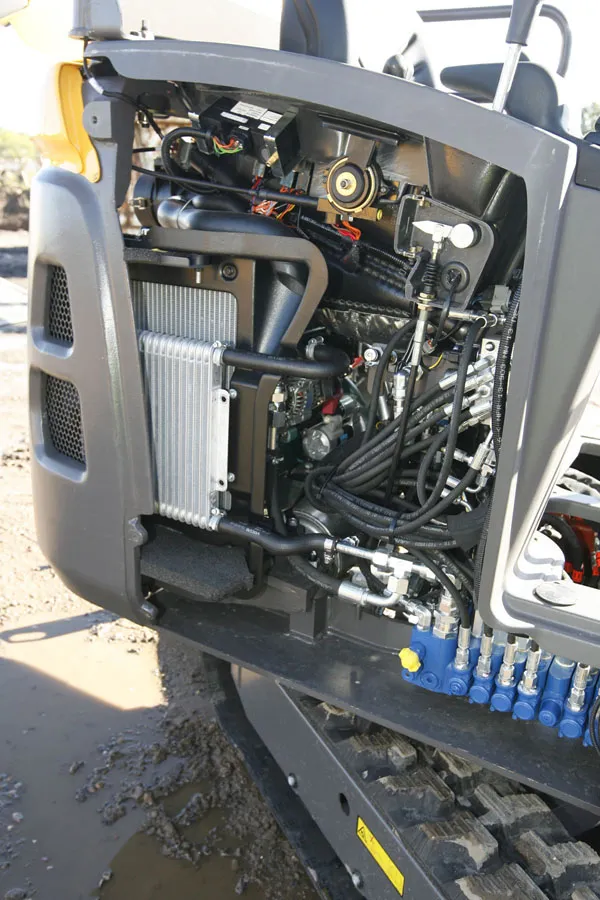
Back in 1848, the original rammers were made out of old wagon wheels. They had zero emissions and were totally silent to use, except maybe for the sounds of the operator who manually pounded down the dirt.
By 1957, Wacker Neuson had launched it gasoline-oil mix two-stroke rammer which the company readily acknowledges was guaranteed to wake up anybody within 100m. Clean it was not, having a gasoline-to-oil mix of 16:1 – 1 gallon of gasoline to 8 ounces of oil. That’s nearly 4 litres of gasoline to 250ml of oil.
Now to today, and the battery-powered AS50e rammer is nearly silent, making it useful near hospitals and in other noise-restricted urban areas. Like the original 1948 model, the newest battery-powered AS50e has zero emissions. And a baby could happily sleep within a few metres.
Wacker Neuson has taken the best of the performance characteristics of the rammer, percussion system and ramming shoe and adapt it to the battery operated rammer, allowing users to experience similar compaction results to those of engine powered units but with zero emissions.
The AS50e has a quick push button start and is easy to guide along walls. The guide handle is specifically designed for the rammer and results in low hand-arm vibration (HAV) for the operator. The AS50e weighs 70kg and hits at a percussion rate of 680 blows per min. The long-life battery is separate from the rammer and can replaced in a few quick steps without any additional tools.







